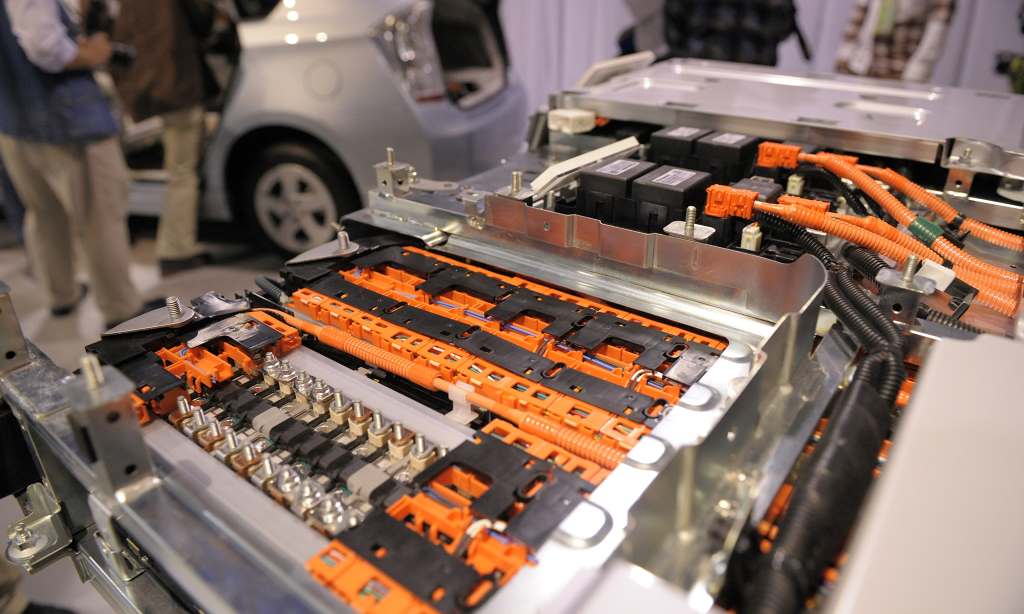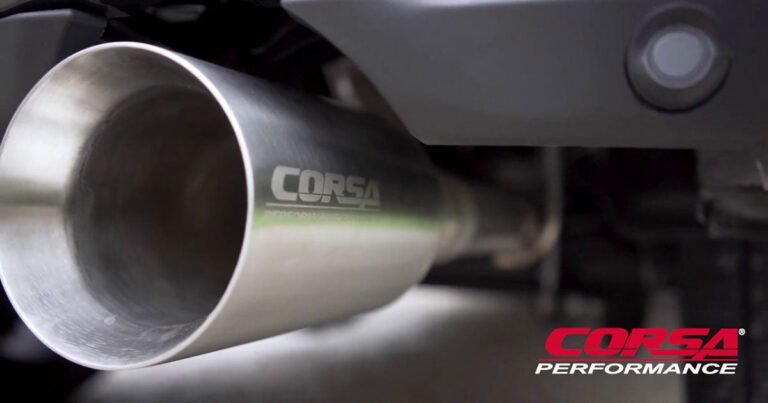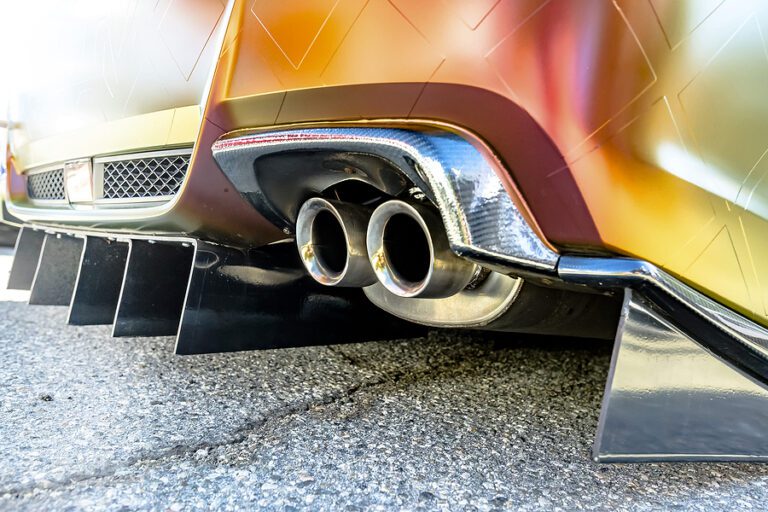Lifespan of a Catalytic Converter: Unveiling the Secrets Behind Its Durability
A catalytic converter typically lasts between 70,000 and 100,000 miles. Catalytic converters are an essential component of a vehicle’s exhaust system.
They are designed to reduce harmful emissions by converting harmful pollutants into less harmful substances. Over time, however, the catalytic converter can become less efficient or fail altogether. Factors such as poor fuel quality, engine misfires, or contaminated exhaust gases can all contribute to the deterioration of the catalytic converter.
In addition, a catalytic converter may also wear out due to normal wear and tear. Despite this, with proper maintenance and regular inspections, a catalytic converter can last up to 100,000 miles. Understanding the lifespan of a catalytic converter can help vehicle owners anticipate when a replacement might be needed.
The Basics Of Catalytic Converters
The Basics of Catalytic Converters
A catalytic converter is an essential component of a vehicle’s exhaust system. Its primary function is to reduce harmful emissions before they are released into the atmosphere. This device is typically made of a ceramic or metallic substrate coated with catalysts such as platinum, palladium, and rhodium.
What is a catalytic converter?
A catalytic converter is a device installed in a vehicle’s exhaust system to reduce the emission of harmful pollutants, such as carbon monoxide, nitrogen oxides, and hydrocarbons. It serves as a catalyst, facilitating chemical reactions that convert these pollutants into less harmful substances like carbon dioxide, water vapor, and nitrogen gas.
How does a catalytic converter work?
A catalytic converter uses a combination of catalysts to facilitate chemical reactions between the exhaust gases and the catalysts’ surfaces. The surface of the catalyst provides a substrate for the reactants to adsorb, allowing for the conversion of harmful gases into less harmful ones through oxidation, reduction, and other chemical processes.
The components of a catalytic converter
| Component | Description |
|---|---|
| Substrate | A ceramic or metallic material that provides the surface for the catalysts. |
| Catalysts | Platinum, palladium, and rhodium substances that facilitate chemical reactions. |
| Canister | The outer shell that houses the substrate and catalysts. |
| Intake and outlet pipes | Connect the catalytic converter to the exhaust system and the muffler. |
Catalytic converters play a crucial role in reducing vehicle emissions and protecting the environment. They have become mandatory in many countries due to their effectiveness in minimizing air pollution.
Factors Affecting The Lifespan Of Catalytic Converters
The lifespan of a catalytic converter can be influenced by various factors, including driving habits and conditions, the quality and maintenance of the converter, fuel quality, and environmental factors.
Driving habits and conditions play a crucial role in determining how long a catalytic converter will last. Frequent short trips and stop-and-go traffic can cause the converter to deteriorate faster. On the other hand, highway driving at consistent speeds allows the converter to function optimally for a longer period.
The quality and maintenance of the converter itself are also important. A well-maintained converter with regular inspections and prompt repairs can last longer. Regular maintenance includes checking for damage, leaks, and clogs that can disrupt its performance.
Fuel quality is another factor that affects the lifespan of catalytic converters. Low-quality or contaminated fuel can deposit harmful substances on the converter, leading to its deterioration over time. It is essential to use high-quality fuel from reputable sources.
Environmental factors such as extreme temperatures, excessive moisture, and exposure to corrosive substances can also impact the lifespan of a catalytic converter. Harsh conditions accelerate the wear and tear process, reducing its overall lifespan.
Signs Of A Worn-out Catalytic Converter
In the lifespan of a catalytic converter, there are several signs that it may be worn out. One of the first signs is a decreased engine performance and power. If you notice that your vehicle is not running as smoothly as it used to and there is a lack of power when accelerating, it could be a sign that the catalytic converter is no longer functioning properly.
Another indicator of a worn-out catalytic converter is increased emission levels. If you are noticing excessive smoke or a strong, rotten egg smell coming from your exhaust, it could be a sign that the converter is no longer effectively reducing emissions.
Additionally, a worn-out catalytic converter may produce strange smells and noises. You may notice the smell of sulfur or a strong burning smell, or you may hear rattling, hissing, or popping sounds coming from the exhaust system.
Moreover, warning lights and error codes can indicate a problem with the catalytic converter. If your check engine light is illuminated or you are receiving error codes related to the emissions system, it is worth having the converter inspected.
Finally, visual inspection tips can help identify a worn-out catalytic converter. Look for signs of physical damage such as dents, cracks, or rust. Additionally, if the converter appears discolored or has a buildup of deposits, it may be a sign of a problem.

Credit: carfromjapan.com
Prolonging The Lifespan Of A Catalytic Converter
Regular maintenance and inspection: Your catalytic converter should be inspected regularly to identify any potential issues. Pay attention to warning signs such as a decrease in fuel efficiency or strange smells. Additionally, scheduling regular maintenance with a qualified technician can help catch problems early on.
Choosing the right fuel and oil: Using the correct fuel and oil can greatly impact the lifespan of your catalytic converter. Make sure to use fuel that meets the manufacturer’s specifications and opt for high-quality oils that provide proper lubrication.
Proper driving habits and techniques: How you drive can also affect the longevity of your converter. Avoid excessive idling, aggressive driving, and rapid acceleration. These habits can put unnecessary strain on the converter and accelerate its wear.
Avoiding harsh conditions and extreme temperatures: Extreme temperatures and harsh conditions can cause damage to your converter. Whenever possible, park your vehicle in a garage or shaded area to protect it from excessive heat or cold. Additionally, avoid driving through deep water or rough terrain that could put undue stress on the converter.
Cleaning and caring for the converter: Regularly cleaning the exterior of your catalytic converter can help prevent the buildup of dirt and debris. However, it’s important to note that only the external surfaces should be cleaned and that any internal cleaning should be left to professionals.
Common Catalytic Converter Problems And Solutions
Lifespan of a Catalytic Converter
Common Catalytic Converter Problems and Solutions
Catalyst poisoning and contamination: One of the most common issues with catalytic converters is catalyst poisoning. This happens when substances like lead, sulfur, or phosphorous contaminate the catalyst, rendering it less effective. Solutions for catalyst poisoning include using high-quality fuel, practicing regular engine maintenance, and avoiding the use of additives that contain harmful substances.
Converter clogging and blockage: Over time, a catalytic converter can become clogged or blocked, limiting the flow of exhaust gases. This can be caused by a build-up of carbon deposits or metal shavings from a failing engine component. To address this problem, cleaning the converter or replacing it may be necessary.
Damaged or crumbling substrate: The substrate, which is the material that holds the catalyst in the converter, can become damaged or crumble due to age, excessive heat, or physical damage. In such cases, replacing the catalytic converter is often the only solution.
Cracks and leaks: Cracks or leaks in the catalytic converter can occur due to corrosion, physical damage, or faulty welding. These issues can lead to a decrease in converter efficiency or even a complete failure. Repairing or replacing the damaged converter is essential to ensure proper exhaust system functioning.
Is replacement always necessary? While many catalytic converter problems may require replacement, some minor issues like small cracks or leaks can be repaired by a professional. However, it’s important to address any problems promptly to prevent further damage and ensure compliance with environmental regulations.
Understanding The Role Of Obd-ii Systems
Lifespan of a Catalytic Converter
Understanding the Role of OBD-II Systems
OBD-II systems play a crucial role in the performance and longevity of catalytic converters. These systems help monitor the various components of the vehicle’s exhaust system, including the converter. By constantly analyzing data from sensors, the OBD-II system can detect potential issues with the converter and other emissions-related components.
The connection between catalytic converters and OBD-II is vital because the converter’s efficiency directly impacts emissions control. If the converter fails to function properly, harmful pollutants may be released into the environment, while also affecting the vehicle’s performance and fuel efficiency.
Thanks to OBD-II, diagnosing and fixing converter-related issues has become more efficient and cost-effective. The system provides diagnostic trouble codes (DTCs) that indicate specific problems with the converter. This information helps mechanics identify and address the underlying causes, enabling prompt repairs. OBD-II also ensures that the converter is functioning optimally, reducing the likelihood of premature failure and extending its lifespan.
Extended Lifespan Technology: Innovations And Advancements
htmlLifespan of a Catalytic Converter
Extended Lifespan Technology: Innovations and Advancements
New materials and catalyst formulations:
Catalytic converters have come a long way with the introduction of new materials and catalyst formulations. Advanced research and development have led to the creation of innovative technologies that enhance the durability and longevity of these essential automotive components. One such breakthrough is the use of high-temperature materials that can withstand extreme conditions, resulting in extended lifespan. Additionally, advancements in catalyst formulations have improved conversion efficiency, reducing wear and tear on the catalytic converter over time.
Catalytic converter designs and configurations:
Another aspect influencing the lifespan is the design and configuration of the catalytic converter. Manufacturers have been experimenting with various shapes and sizes to optimize performance and durability. Factors such as cell density, substrate composition, and flow characteristics play a significant role in determining the lifespan of a catalytic converter. By incorporating innovative designs and configurations, automotive engineers aim to prolong the efficiency and effectiveness of these emission control devices.
The future of catalytic converters: Predictions and possibilities:
The future holds exciting possibilities for catalytic converters as technology continues to evolve. One prediction is the development of more efficient catalysts that can further reduce harmful emissions. With stricter emissions regulations and the need for sustainable transportation, research and innovation in catalytic converter technology are expected to surge. Furthermore, advancements in materials science and engineering may lead to the creation of even more durable and long-lasting catalytic converter solutions. As we move towards a greener future, catalytic converters will continue to play a crucial role in reducing harmful exhaust gases and protecting our environment.
Frequently Asked Questions For Lifespan Of A Catalytic Converter
Can A Catalytic Converter Last 200000 Miles?
Yes, a catalytic converter can last up to 200,000 miles.
How Many Miles Do Catalytic Converters Usually Last?
Catalytic converters generally last around 70,000 to 100,000 miles, depending on driving conditions and maintenance.
How Many Years Do Catalytic Converters Last?
Catalytic converters typically last for 10-15 years. Proper maintenance and regular checks can help extend their lifespan.
Can A Catalytic Converter Last 300 000 Miles?
Yes, a catalytic converter can last for 300,000 miles. It is designed to be a durable component of a vehicle’s exhaust system. Regular maintenance and proper driving habits can help extend its lifespan.
Conclusion
To summarize, the lifespan of a catalytic converter largely depends on various factors such as driving conditions, regular maintenance, and the quality of the converter itself. By adhering to best practices like using high-quality fuel, reducing idling time, and addressing any potential issues promptly, car owners can prolong the life of their catalytic converters.
Regular inspections and maintenance can help identify any potential problems early on, ensuring the optimal functioning and longevity of this crucial emission control device. Remember, a well-maintained catalytic converter not only helps protect the environment but also improves the overall performance of your vehicle.








